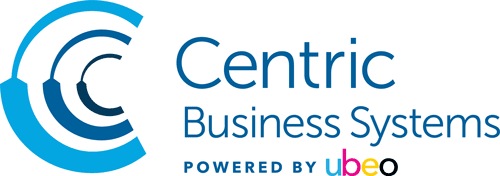Digital Transformation Is Meaningless If You Don’t Factor in Cybersecurity
Digital transformation helps businesses increase productivity, accelerate business processes, reduce costs, and increase customer satisfaction. But it also comes with a cost. Digital transformation introduces new risks that come with dire consequences. The information that once lived on paper documents stored behind several locked doors, is now stored on some server that anyone with the right credentials can access. And that information can be very valuable. Cybersecurity researchers say that hackers can fetch anywhere between $25 and $6,000 per stolen record. Since a single breach can yield hundreds, thousands, or even millions of records, you can see that cybercriminals have plenty of motivation to steal your data. It doesn’t help that your highly skilled, ultra-motivated adversaries have the easier job. As attackers, they only have to get lucky once — defenders have to be lucky always.
The fallout from breaches can be a death blow for most businesses. According to the Cost of a Data Breach Report 2021 from IBM, the average data breach cost businesses $4.24 million — up 10% from last year. It can also be a blemish on your reputation that cannot be overcome. People don’t like working with the guy who just got hacked.
Therefore, businesses must build their digital transformation strategy with cybersecurity in mind. A good place to start is with the way you store your business’s sensitive information.
Protect your sensitive data with a smart document management strategy
Humans continue to be the weakest link in your cybersecurity chain. According to the Verizon 2021 Data Breach Investigations Report, “85% of breaches involved a human element,” and phishing was the most popular known method for infiltrating targets. While a document management system cannot prevent employees from falling prey to a cunning social engineer, it can mitigate what your adversary can do after they commandeer your employee’s account or find some other way in.
Document management systems enable businesses to limit which files a given user can access to only the files they use to get the job done. That way, if an attacker gains control of an employee’s account, they won’t have free reign to rummage through all your files. They will only be able to see the files that the hacked employee’s account has access to. And even then, you can restrict what can be done to that document. For example, you can set files to read only and disable printing and downloading of documents, so they cannot be appended, deleted, or shared.
Many of today’s document management systems integrate with multifactor authentication (MFA) solutions like Okta and RSA. MFA adds another layer of protection by sending a dynamic PIN to a user’s phone or email, which needs to be entered after they enter their password. That way, if your password is stolen, it doesn’t mean hackers can just waltz right in — they’d need to also intercept the PIN or commandeer your cell phone or email account, too.
You can also keep tabs on how users move through your document management system. This won’t necessarily prevent someone from breaking in, but it helps detect suspicious activity.
Every time someone takes an action on a document — opening it, sharing it, appending it, etc. —I t’s logged. This can provide investigators with clues to catch the culprit and remediate some of the damage done. Monitoring user behaviour can also help your IT team detect unauthorized access to your solution. For example, if your California-based employee is logging in from an IP address in Croatia at 3 a.m., it’s a pretty good sign that someone has commandeered that employee’s account, and your IT team can start their investigation and prevent the hacker from causing any more damage than they already have.
Another helpful feature that you’ll find in most document management packages, is the ability to backup and restore your data cloud. Ransomware attacks — where a hacker encrypts all your files and charges a ransom for the key — are increasingly popular. But with a document management system, your data can be backed up somewhere else in the cloud. That way, you don’t have to pay a ransom to restore your data.
Find a partner you can trust
Ultimately, most SMBs don’t have the resources or knowledge to protect themselves. They can’t set up and maintain their own SOC or afford to staff it 24/7. In many cases, they can barely afford an IT staff to manage their day-to-day needs. Protecting themselves is only going to be more difficult, too. Hackers are more brazen than ever, and both the volume of attacks and the cost of dealing with the, is only going to increase.
It’s for that reason that SMB should work with a managed IT or cybersecurity provider that can help keep them safe. While no one can guarantee 100% percent protection (there is no such thing as 100 percent secure), they can certainly do a better job than you can.
Securing data and information, in whatever form it exists, is more important today than it has ever been, and establishing strong security and compliance strategy is essential. Centric Business Systems provides software, hardware, services, and support that can help you create a more secure document management solution for your firm. Visit us at www.centricbiz.com or contact us at (877) 902-3301 to schedule an assessment and consultation today.
